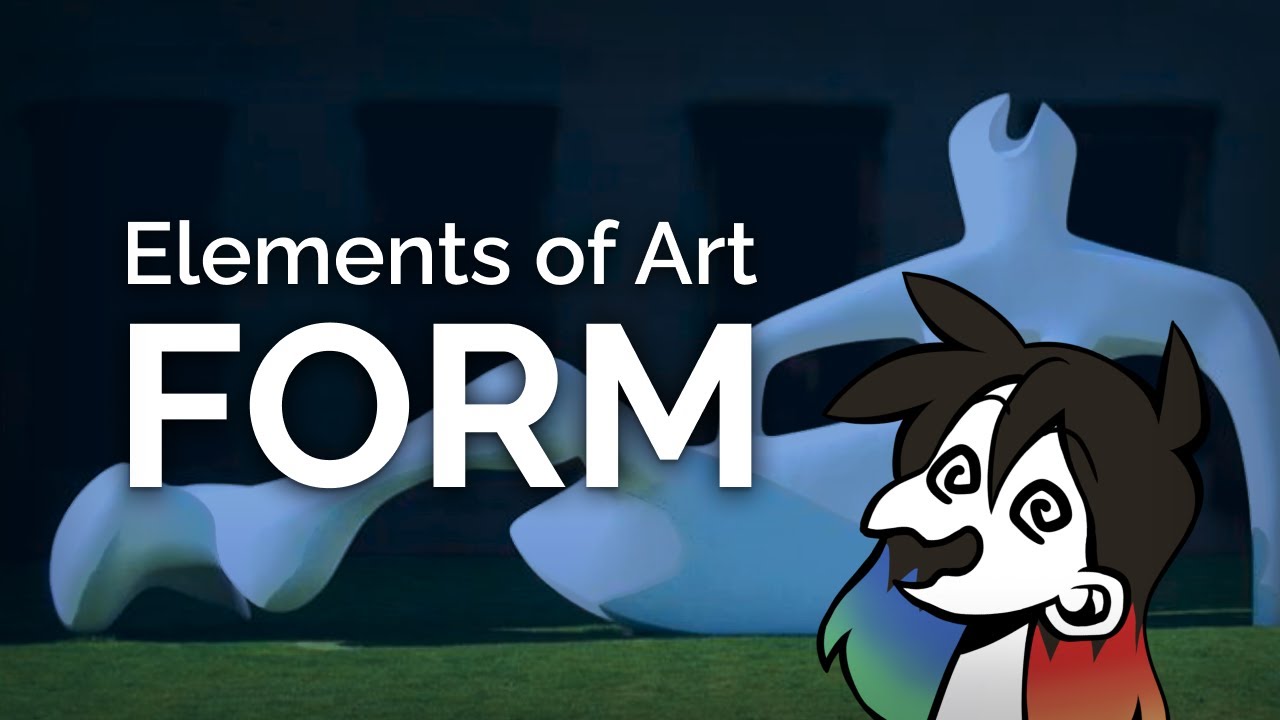SHAPE: Elements of Art Explained in 7 minutes (funny!)
Summary
TLDRThe video discusses the importance of learning and understanding shapes in art. It emphasizes how geometric shapes, like squares and circles, serve as the foundation for drawing organic shapes, such as human figures and animals. The video contrasts geometric shapes, used for man-made objects, with organic shapes found in nature. It highlights examples from artists like Paul Klee and Picasso, explaining how shapes help build complex figures. The speaker encourages artists to start with basic shapes to improve their drawing skills and to explore how shapes influence character design and expression.
Takeaways
- 🟠 Shape is a fundamental element of art, often overlooked but critical for building up drawings.
- 🔺 Geometric shapes, like squares, rectangles, and triangles, are precise and regularly used for man-made objects such as buildings.
- 🌿 Organic shapes, also called biomorphic shapes, are irregular, found in nature, and cannot be named with simple geometry.
- 🧱 Artists often begin by using geometric shapes to build up organic shapes, and this is a common practice in drawing human and animal figures.
- 🎨 The cubism movement, particularly the works of Pablo Picasso, used geometric shapes to construct organic forms in abstract ways.
- 📐 Positive and negative space in art help create illusions or distinguish main objects from the background, an important concept in shape design.
- 🖼 Shape language in character design conveys emotions or traits: sharp lines suggest evil, while round shapes are friendlier.
- 📚 Many artists, such as those in manga like 'Fullmetal Alchemist,' use geometric shapes as the foundation before adding organic details.
- 💡 Shapes help in creating silhouettes, crucial in character and creature design, to define a figure's identity before adding detail.
- 💭 Practicing with basic geometric shapes is essential for beginners to improve their overall ability to create organic shapes and advanced illustrations.
Q & A
What are the two main categories of shapes mentioned in the script?
-The two main categories of shapes are geometric shapes and organic (or biomorphic) shapes.
How are geometric shapes generally described and where are they commonly found?
-Geometric shapes are described as precise, regular, and calculated. They include squares, rectangles, circles, and triangles. They are often found in human-made objects like buildings and machines.
What are organic shapes, and what makes them different from geometric shapes?
-Organic shapes, also called biomorphic shapes, are less precise and more irregular. They do not have specific names and are found in nature, such as in the shapes of animals, plants, and other natural elements.
Why is it important for artists to learn shapes before progressing to more advanced drawing techniques?
-Learning shapes is essential because they serve as the foundation for building more complex forms and figures. Skipping this step can result in difficulty in accurately drawing organic and complex figures later on.
What does 'shape language' refer to in the context of character design?
-'Shape language' refers to the use of specific shapes to communicate meaning or evoke emotions in characters. For example, sharp, thin shapes may convey that a character is evil or sly, while rounder, wider shapes may make a character appear friendly or trustworthy.
How are geometric shapes used in the cubism art movement?
-In the cubism movement, geometric shapes are used to depict organic figures in an abstract manner. This is evident in Pablo Picasso's work, where he used triangles, rectangles, and other shapes to build up images of people and objects.
What is the role of silhouettes in character design?
-Silhouettes in character design help to define the basic outline of a character or creature without any details. They provide a foundation to build upon and are crucial for establishing the overall shape and structure of the design.
What is positive and negative space, and how are they used in art?
-Positive space refers to the main figures or objects in an illustration, while negative space is the background. Artists use these concepts to create visual balance and to incorporate optical illusions, like seeing multiple images within one illustration.
What is the significance of Paul Klee's artwork 'Castle and Sun' in relation to geometric shapes?
-Paul Klee's 'Castle and Sun' is a prime example of using geometric shapes to create a composition. As part of the expressionist movement, his work consists of a variety of geometric shapes such as squares and circles, symbolizing human-made structures.
How can beginners start learning to draw organic shapes?
-Beginners should start by practicing with basic geometric shapes that make up the foundation of organic figures. Once they are comfortable, they can modify these shapes with details to create more complex, organic shapes.
Outlines

This section is available to paid users only. Please upgrade to access this part.
Upgrade NowMindmap

This section is available to paid users only. Please upgrade to access this part.
Upgrade NowKeywords

This section is available to paid users only. Please upgrade to access this part.
Upgrade NowHighlights

This section is available to paid users only. Please upgrade to access this part.
Upgrade NowTranscripts

This section is available to paid users only. Please upgrade to access this part.
Upgrade NowBrowse More Related Video
5.0 / 5 (0 votes)





